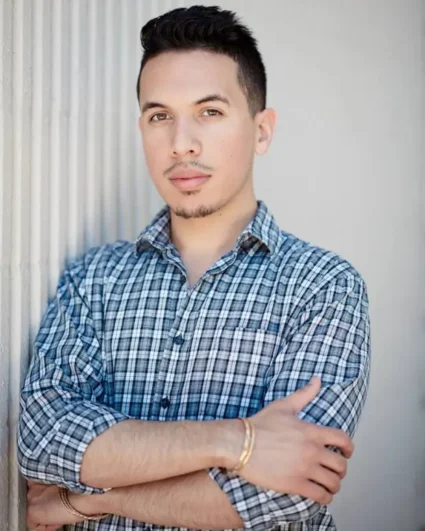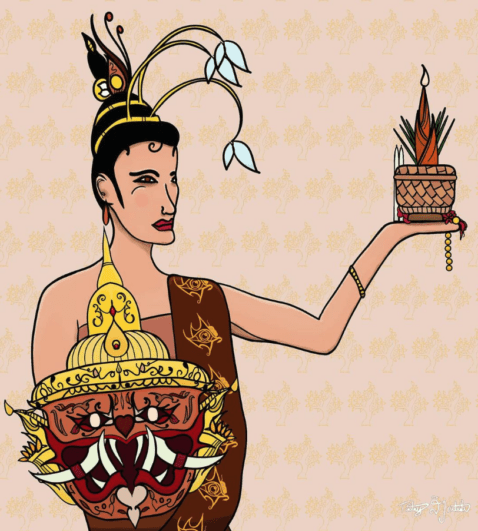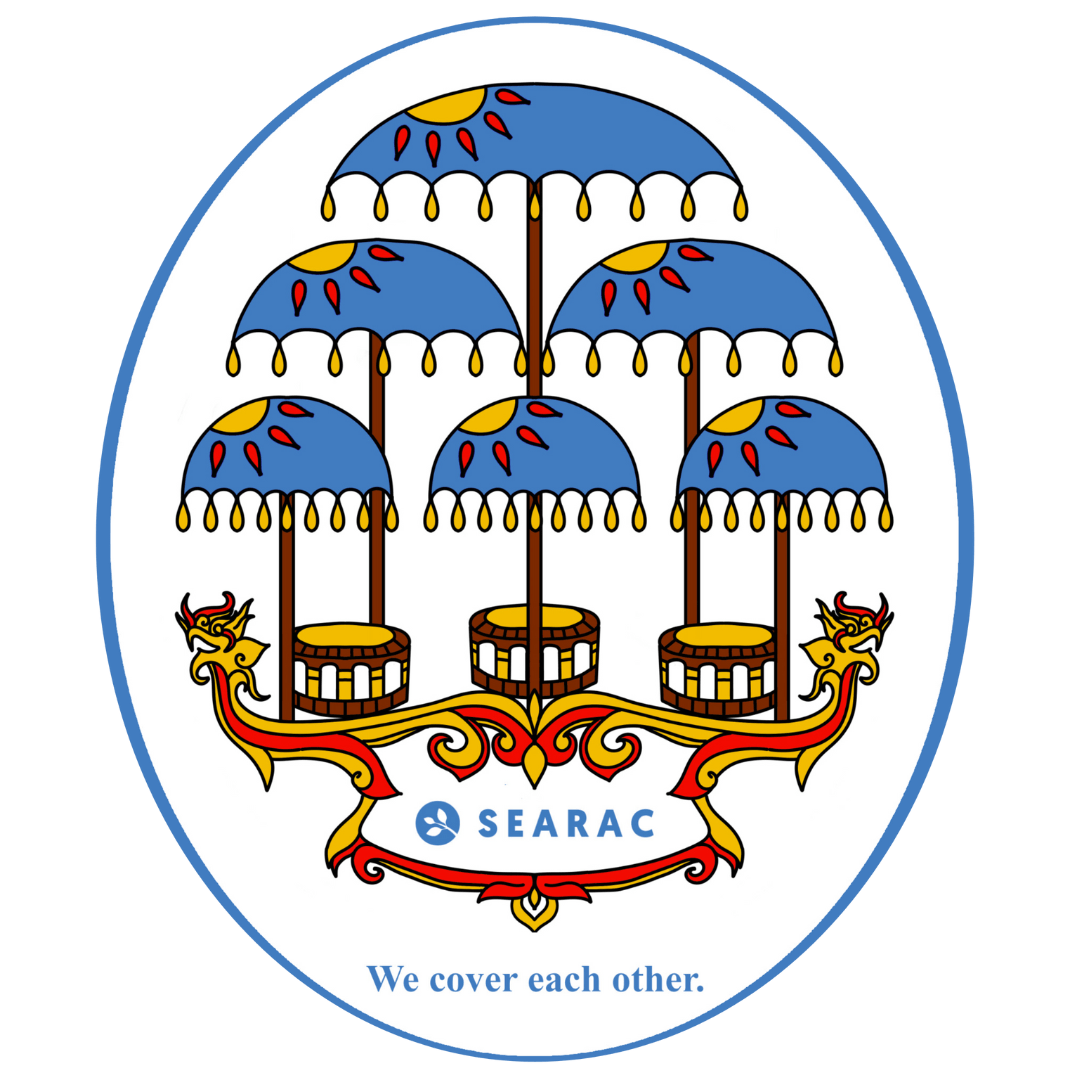
Timothy Singratsomboune is an LGBTQ+ artist that studies Lao & Lao American histories. As a visual artist, Timothy’s work has been shown with the Asian Pasifika Arts Collective and with Brand New: Ohio – an artist showcase for Southeast Asian & Pacific Islander artists that he helped co-found in his home region of Central Ohio. Timothy’s Lao and LGBTQ+ heritages consistently push him to incorporate abundance and intricacy into his minimalist Pop Art style, which includes painting, drawing, digital design, and even creative writing. You can learn more about his work at timothysingratsomboune.wordpress.com.
Tell us a little about yourself! Who is your family/community, where are you located, what kind of art do you do?

I’m Timothy. Since about 2015, I have been writing essays on the history of Laos and the Lao diaspora, and I’ve also been making digital illustrations to pair with them.
My hometown is in Central Ohio, and Asia is where I find myself for the time being. A major part of my work is connecting with other artists who have roots in Laos – whether they are ethnically Lao or identify with any of the many other ethnic groups in Laos. Throughout the last decade, my work has helped me connect with so many other Southeast Asian artists virtually and in-person. I’ve had my visual works shown with the Asian Pasifika Arts Collective, the Lao American Writers Summit, Asian Americana, and LaoCan. With fellow Southeast Asian artists, I was also a co-organizer of two Southeast Asian-focused art shows – Brand New: Ohio (2017) and Lao New Queer (2021, 2023).
What does the 50th anniversary of Southeast Asian American refugee resettlement mean to you?
The 50th year of Southeast Asian refugee resettlement brings up so many varying emotions in me. The most prominent emotion, though, is excitement. After decades of seemingly impossible odds, a lot of Southeast Asians are waking up and taking an interest in the future of our communities. I think we’re pushing past the idea that our only goal is our immediate survival, and we’re pushing past the idea that our experiences are something to be validated. I think Southeast Asian communities are now more outspoken about their community needs, and they’re ready to create a more just world around them.
What organization are you supporting with this fundraiser, and why does their work speak to you?
I’ve chosen to highlight Asian Prisoner Support Committee (APSC) because their work makes sure that we cover everyone in our communities, even the people that have ensnared in the prison system. Our community care should cover everyone.
What do you hope for Southeast Asian American communities for the next 50 years?
The refugee communities of Southeast Asia are diverse. There is a vast array of languages, cultures, and experiences. So many of us are also making new connections between our diverse experiences and the experiences of other communities around the world, so I think our vision of solidarity is going to get wider and stronger as we try to shape the future.

Statement about the fundraiser piece: This design makes use of the Lao khantoke, the rattan floor tables that cultures across Southeast Asia use. The circular composition is a throwback to Southeast Asian product labels (balms, rices, brooms) and Southeast Asian amulets, which I hypothesize have influenced each other. I’ve also added a naga/dragon, which is a protector.
You can find t-shirts and tote bags with Timothy’s designs on our Bonfire store AND new for this year, find stickers, posters, magnets, prints, and notebooks on our Redbubble.
Check out additional 50th Anniversary Fundraiser interviews with our artists here:
Holding onto culture through art with HNin Nie
Celebrating SEAA courage and bravery with Sheena Vang
Khou Vue is celebrating SEAA perseverance
Killamari is representing SEAAs in a big way
